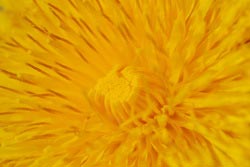Surgical removal of eights and roots of teeth
Surgical removal of the figure eight is one of the most difficult dental surgery procedures. Teeth of wisdom – eights are a nuisance of many patients. Due to the evolutionary decrease in the size of the jaw in humans, a large number of patients lack enough space for proper teething and setting the eighth tooth in the mouth. This is the direct cause of many ailments such as:
- the teeth are pressed by the eight – this leads to the formation of bite defects and disturbances of smile aesthetics
- swelling of the gums and cheeks at the lower eights – in advanced cases can lead to haze and severe pain symptoms
- deep eight decay – caused by difficult brushing and purifying of the last stem teeth due to their incorrect setting in the tooth arch
- caries of adjacent teeth – is caused by the flood of food residues in the area of the adjacent tooth and difficulty in its thorough purification
- bone retention – retained eights can cause inflammation in the bone
The above complications are a strong indication to remove eights. Today, in an age of dynamic development of dentistry, we are able to carry out such a procedure completely painlessly and stress-free.
Faqs:
- How long does the soreness last after tooth extraction? – pain after surgical extraction of the figure eight, as a rule, disappears within a few hours. With difficult and complicated treatments, the dentist prescribes appropriate medications to ensure painless and rapid healing of the post-extraction wound.
- Do I always have to take an antibiotic after the procedure? – No, the antibiotic is only prescribed after extremely difficult extractions – mainly when removing teeth retained in the bone. The use of antibiotic therapy is intended to facilitate healing and prevention of inflammation at the site of extraction.
- Does smoking worsen wound healing? – Yes, smokers significantly increase the risk of complicated healing of the postoperative wound, therefore smoking should be avoided for a period of 24 hours after the procedure. In the case of painful, difficult healing, it may be necessary to visit the purpose of resupplying the wound with appropriate medications – such a visit to our office is free of charge. In smokers, it is recommended to apply A-PRF dressing to the socket.
- Are stitches put on after the procedure? – they are usually assumed, in addition, in the case of difficult extractions, it is recommended to use a dressing of platelet-rich fibrin A-PRF. The latest research shows that the use of A-PRF significantly relieves pain, practically eliminates the risk of the so-called dry socket and significantly accelerates tissue healing.



